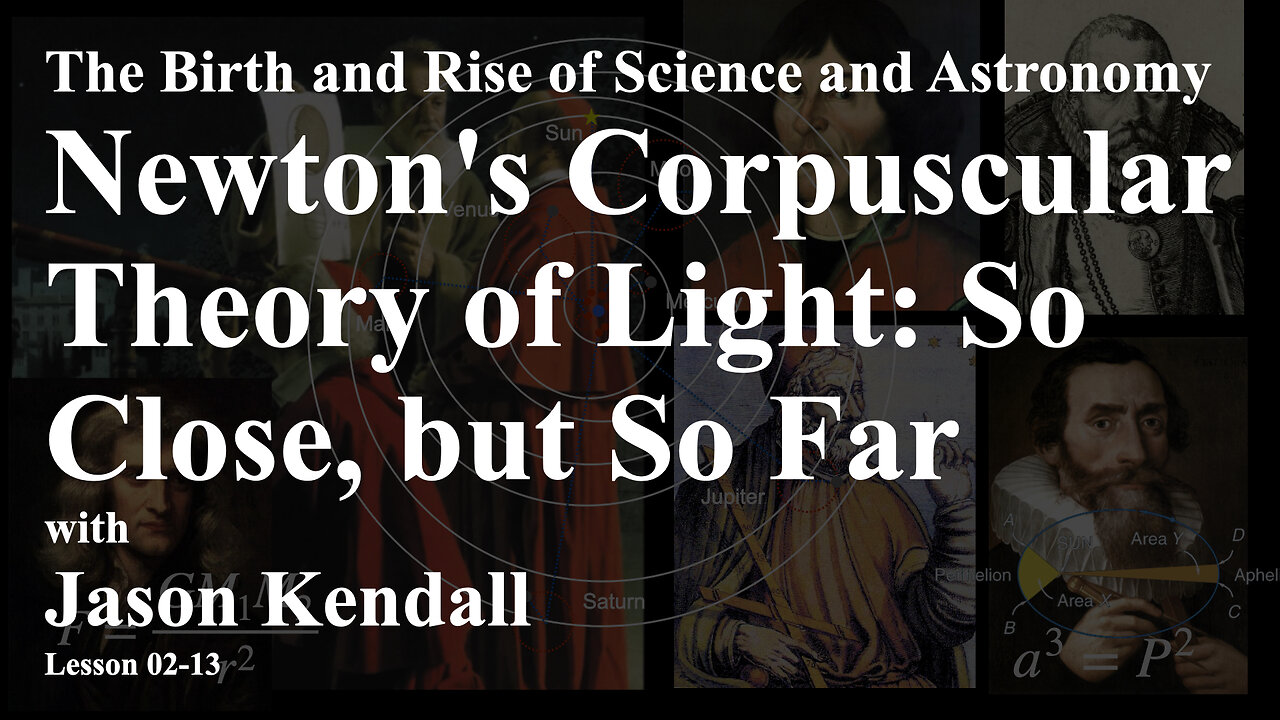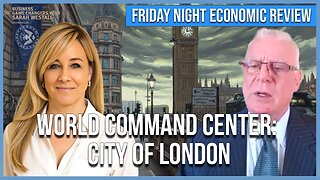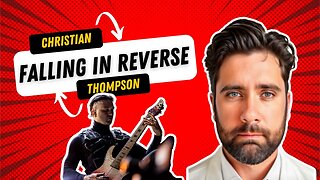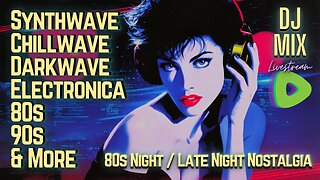Premium Only Content

Why Did Newton Think Light Was Made of Particles?
Isaac Newton’s contributions to the field of optics remain pivotal in understanding the nature of light. In the mid-17th century, Newton embarked on a journey to elucidate the characteristics of light, beginning with the acquisition of his first prism in 1666. This marked the inception of a series of experiments that would ultimately challenge prevailing theories of light, particularly the wave model advocated by his contemporaries. Newton’s inquisitiveness led him to theorize that light was comprised of particles, which he referred to as corpuscles. This notion was posited as a counterargument against the widely accepted wave theory of light, which suggested that light exhibited behaviors similar to waves propagating through a medium.
Newton’s reasoning was grounded in his observations of reflection and refraction. He noted that when light strikes a smooth surface, such as a mirror, the angle of incidence is equal to the angle of reflection. This principle, which is foundational in the study of optics, led Newton to conclude that light behaves similarly to solid particles, which bounce off surfaces in a predictable manner. In his experiments, he demonstrated that light could be directed in straight lines, asserting that its ability to form discrete rays further supported his corpuscular theory. Furthermore, he distinguished between the behavior of light and that of waves, which are characterized by their tendency to spread out when they encounter obstacles.
In 1672, Newton presented his findings to the Royal Society, where he articulated his hypothesis regarding the corpuscular nature of light and introduced the concept of a spectrum comprising seven distinct colors, now popularly represented by the acronym ROYGBIV. This categorization was not merely a scientific endeavor; it also reflected a mystical inclination prevalent in Newton’s time, as the number seven held significant symbolic weight. However, his assertions faced considerable opposition, particularly from Robert Hooke, who championed the wave theory of light. This rivalry not only underscored the contentious nature of scientific discourse but also highlighted the broader struggle between differing paradigms within the scientific community.
Newton’s prism experiments further solidified his arguments. He demonstrated that when white light is passed through a prism, it disperses into a spectrum of colors. By employing a second prism, he was able to recombine the dispersed light back into white light, effectively negating the idea that the prism corrupts the light. Instead, he argued that the prism merely refracts the light without altering its inherent properties. This experiment was crucial in supporting the corpuscular theory, as it suggested that the colors produced were not indicative of corruption but rather manifestations of the different properties of light.
Despite Newton’s compelling arguments, he encountered significant resistance from the scientific community, particularly concerning the wave properties of light, such as diffraction. In the wake of his initial findings, Christiaan Huygens sought to reconcile the wave theory with the observable phenomena of light, including refraction and reflection. Huygens proposed that light behaves as a wave, leading to further experimentation and debate in the years that followed. This scientific contention was emblematic of the dynamic interplay between competing theories, which is a hallmark of scientific progress.
The discussions surrounding calcite crystals added another layer of complexity to the understanding of light. These crystals exhibited unique optical properties, such as producing multiple images when viewed through them, which posed challenges for both the corpuscular and wave theories. Huygens, attempting to build upon Newton’s findings, faced difficulties in explaining these phenomena within the framework of wave optics. The interaction of light with materials continued to be a point of contention, as Newton and Huygens approached the problem from fundamentally different perspectives.
In 1704, after years of refinement and debate, Newton published his seminal work, “Opticks,” which compiled his experimental findings and theoretical propositions regarding light. This publication was instrumental in establishing the corpuscular theory as the dominant explanation for the behavior of light for an extended period. Newton’s influence was further solidified by his previous successes in mathematics and physics, which lent considerable weight to his arguments in optics. His work on laws of motion and gravitation, coupled with his meticulous experimental methods, positioned him as a preeminent figure in the scientific landscape of his time.
Despite the initial acceptance of Newton’s corpuscular theory, subsequent advancements in optics and the understanding of light led to a reevaluation of these concepts. The wave theory, bolstered by the work of scientists such as Thomas Young and Augustin-Jean Fresnel, ultimately gained traction as a more comprehensive explanation of light phenomena. The historical context of Newton’s discoveries serves as a reminder of the evolving nature of scientific understanding, shaped by rigorous experimentation and the interplay of ideas.
In conclusion, the narrative of Newton’s work in optics illustrates the intricate relationship between scientific inquiry and interpersonal dynamics within the scientific community. The debates between Newton, Hooke, and Huygens exemplify the vibrant and often contentious nature of scientific progress, reminding us that the path to knowledge is fraught with challenges and disagreements. As we continue to explore the nature of light, it is essential to acknowledge the historical struggles that have paved the way for contemporary understanding, as well as the collaborative and adversarial relationships that have driven scientific advancement.
-
 1:29:13
1:29:13
Sarah Westall
4 hours agoThe City of London: Infiltration, Intimidation & Centralized Power w/ Mike Harris
29.1K11 -
 10:14:18
10:14:18
Dr Disrespect
15 hours ago🔴LIVE - DR DISRESPECT - ARC RAIDERS - AGAINST ALL DANGER
185K25 -
 32:09
32:09
ThisIsDeLaCruz
1 day ago $1.09 earnedFalling In Reverse: Christian Thompson’s Stage Tech Revealed
25.4K4 -
 LIVE
LIVE
SynthTrax & DJ Cheezus Livestreams
1 day agoFriday Night Synthwave 80s 90s Electronica and more DJ MIX Livestream 80s Night / Late Night Nostalgia
389 watching -
 4:05:52
4:05:52
Nerdrotic
10 hours ago $13.10 earnedHollywood REGRET | Disney's Predator | The Feminist Avengers - Friday Night Tights 379
61.7K17 -
 2:36:22
2:36:22
Mally_Mouse
4 days agoFriend Friday!! 🎉 - Let's Play! - MIMESIS
29.6K3 -
 41:20
41:20
MattMorseTV
6 hours ago $23.01 earned🔴Schumer just BACKSTABBED his OWN VOTERS. 🔴
37.2K76 -
 3:33:34
3:33:34
MissesMaam
7 hours ago*Spicy* Friend Friday with Mally_Mouse!! 💚✨
13.4K3 -
 57:44
57:44
Candace Show Podcast
6 hours agoBen Shapiro Is Crying Again. | Candace Ep 261
63.8K230 -
 4:13:24
4:13:24
megimu32
6 hours agoOFF THE SUBJECT: MEMESIS w/ MALLY MOUSE | MISSES MAAM | SAVAGEJAYGATSBY
6.82K2